Assignment: Map a location as precisely as possible considering social dynamics as well as physical attributes; Locate a space that you will analyse and observe, through writing, logging and visual documentation.
I chose to map the "Reguliersdwarsstraat" in Amsterdam. This is known to be the gay street of Amsterdam.
#1 mappings
The map shows the movements in the street: this street is mostly pedestrian, as it is closed for cars from 12PM till 7 AM.
The movements in the street changes throughout the day.Most of the movement is at night where the bars and clubs are: people are dancing and mingling in front of the bars.
As the street shuts down it gets more accessible and saver for passengers. It also creates a hybrite space between the public and private.
January 15th, during lockdown :(
With the current lockdown the situation is different. The bars are closed and some restaurants are open for takeaway only till 8PM. The regulations of the lockdown (together with the weather outside) make the street less attractive and therefore almost empty. Especially during night time.
As well as the movements, the bodies in the street differ throughout the day. The street is mostly a place for leisure, but also a place for work and living. Before the lockdown there was a lot of tourism as well as locals visiting. Tourists that are visiting the city center of Amsterdam and gay tourists who want to experience gay nightlife in Amsterdam. The locals in the street are mostly employees, artists performing, gay men, residents and young (queer) community looking for leisure.
In the nighttime you see a lot of festive clothes, glitter, colors and nude. Throughout the day people are dressed more casual.
Even though the street strives to be inclusive, most of the visitors still seem to be white and male. The several asian restaurants in the street have several employees of an asian origine.
The spatial setting of the street is mostly defined by the colors black and beige of the bricks of the old dutch houses, green of the plants and bright colors of the signboards of restaurants and flags.
The street is not that wide, which makes it feel cozy and warm. The fact that it is shut down for cars from 12PM till 7AM contributes to this coziness. The smells are mostly of asian food.
Also the inside of the bars are very cozy. Most of the bars and clubs have several floors and are very small with small stairs.
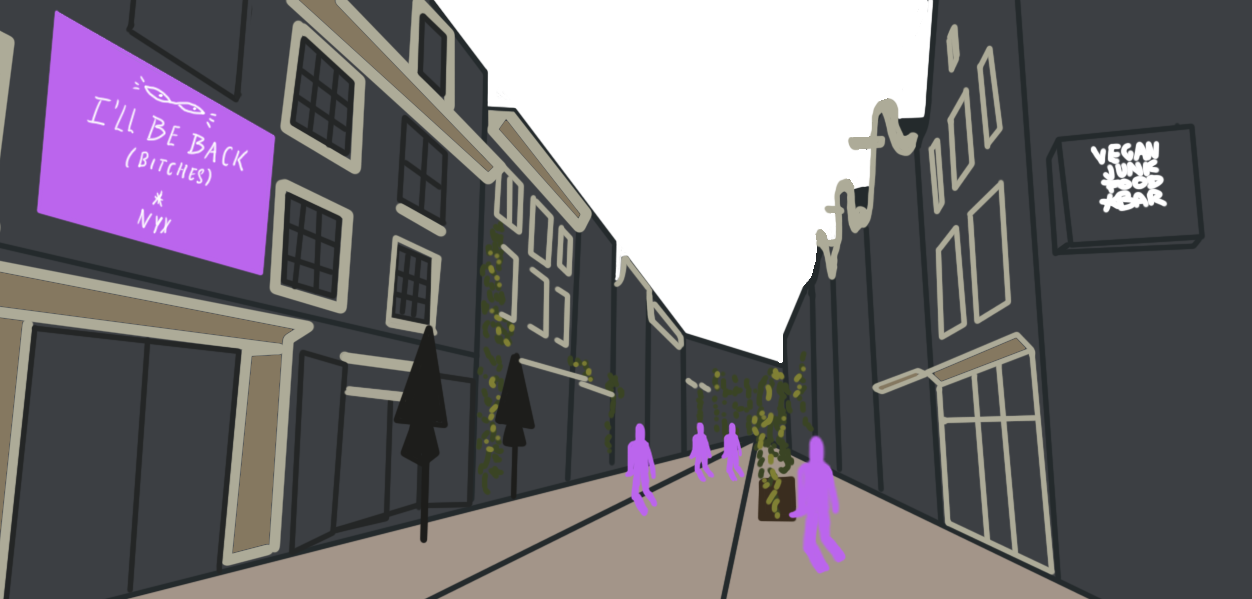
For the wider context of the street I focussed on where it is situated inAmsterdam, what other important gay and queer places are located where and where there was violence against gay people in 2020/2021 (In this case the only reported violence was on gay men on the street and one on a gay man at a non-queer party). It is striking that these incidents happened outside the citycenter and gay nightlife area.
This made me interested in the feeling of safety among gay/queer people in Amsterdam. I looked up data on if people are feeling unsafe because of their sexual orientation and if so, where.
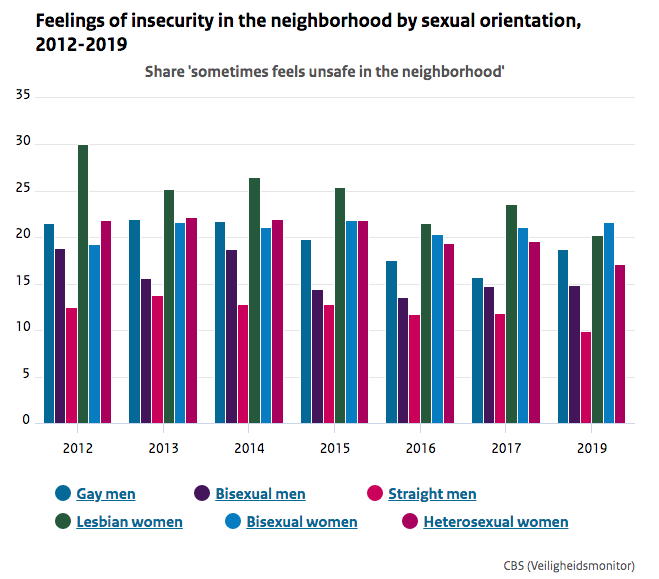
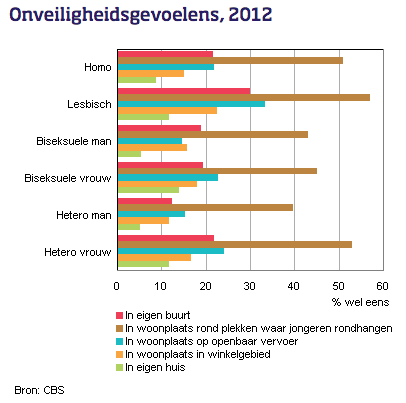
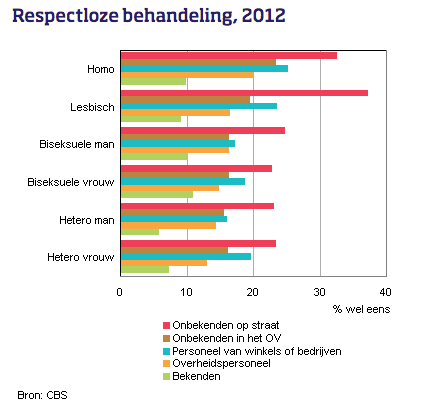
The data shows that queer people unsafe, and that when they do it is mostly by strangers on the streets or places where young people hang out. Unfortunately this data is from 2012.
Other data I found was by a study from AmsterdamPinkPanel, created by the University of Amsterdam and the COC. The data shows that queer people mostly change their behaviour by:
avoiding unsafe places and make sure they don't stand out. Some mention that they avoid non-LHBTI people and places.
For me this shows how important it is to have places dedicated to the queer community and have the community visible in everyday life. With the current lockdown I think there is a lack of visibility and feeling of community as a lot of the queer community happens in nightlife.
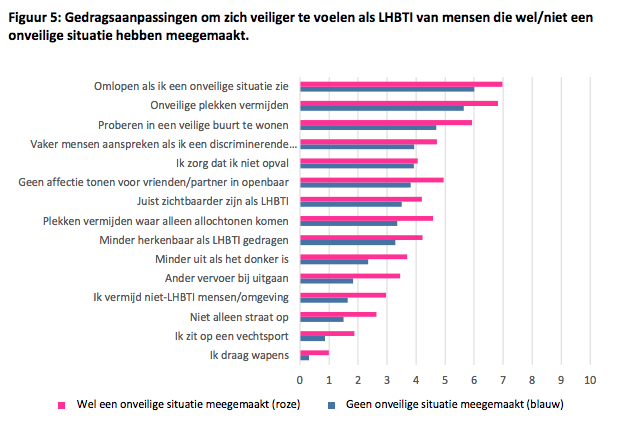
I talked to queer friends about this by asking them the following questions: What do you like about gay nightlife? Do you feel safer at bars and parties dedicated only for gay or queer people? Do you change your behaviour at certain moments, if so when and how? Do you feel you can express yourself as much in everyday life as you can when going to a gaybar?
I asked 12 friends: 2 bisexual women, 1 bisexual man, 5 gay men, 1 transgender person and 3 lesbian women. The gay men, trans man and bisexual man, told me they definitly prefer going to a gay bar, with the reason that they feel like they can express themselves more without feeling unsafe or judged. But also because they find gay bars are much more of a party then other 'regular' bars. Lesbian and bisexual women seemed more indifferent, and their choice moistly depends on the music or where their friends went to.
As last I asked them if we need more physical LGTBQ places in which we only allow LGTBQ people & If the LGTBQ places need to stay for LGTBQ only. These were the answers:
people of the reguliers
This street was build in 1586. Around 1800 lost much of their wealth, and the expensive houses in the street were sold or rented to ordinary people. In the 19th century they were replaced by small business using horse carriages. As the western part of Reguliersdwarsstraat was influenced by the wealth of the Golden Bend, the eastern part of the street was more influenced by the poverty of the back-street quarter called Devil's Corner (Duvelshoek). During World War II, German Nazi-officers were housed in the Carlton Hotel, which got bombed.
Since the fifties there was a steady growth of bars and restaurants in Reguliersdwarsstraat. In 1963, the first gay bar was opened in the street called MacDonald. This wasn't the first gay bar in Amsterdam. café 't Mandje on the Zeedijk was opened by a lesbian woman in 1927. The first message about gays in Reguliersdwarsstraat itself dates from 1897.
At the beginning of the 20th century, there were about 5 establishments that were considered gay bars, the most famous and convenient of which was The Empire on Nes 17, which was already known as such in 1911. However, the Amsterdam police kept a close eye on these matters and when too many gay men arrived, the matter was ended by revoking the permits. Visitors were also regularly taken for questioning.
Until the mid-1980s, gay life and gay sex were largely without worries. Around 1983 AIDS reached Amsterdam. Because very little was known about this disease, the first information and prevention meetings about Aids were organized in the street at a gaybar called April.
in 2006 the western part was reconstructed to make Reguliersdwarsstraat more attractive. A new pavement was laid, sidewalks were made broader and the street can now be closed for cars during the summer season. This to make more space for pedestrians and terraces.
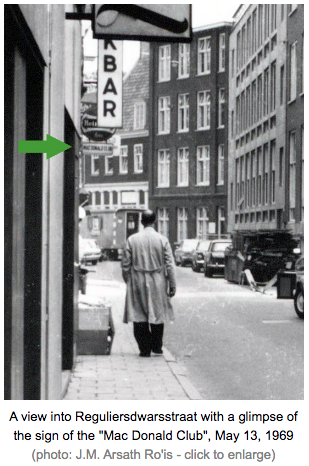
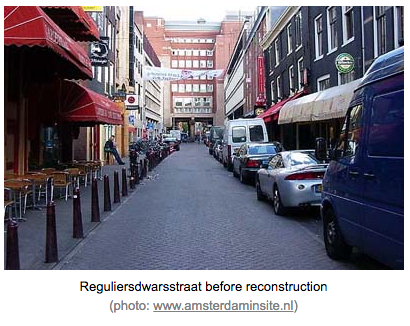
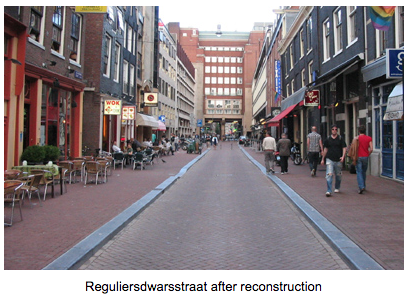
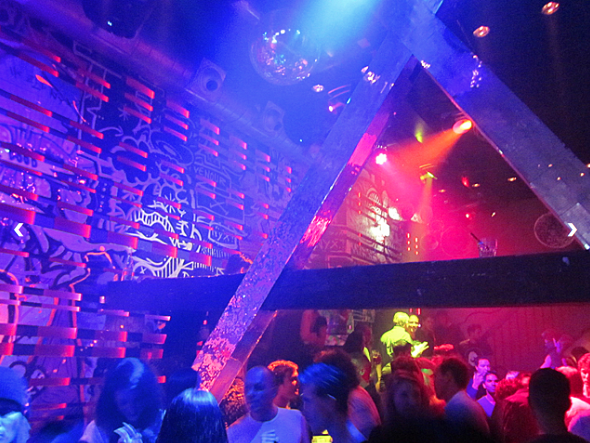
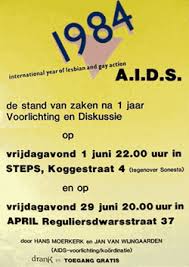
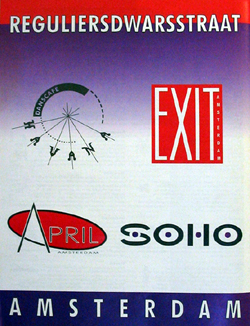
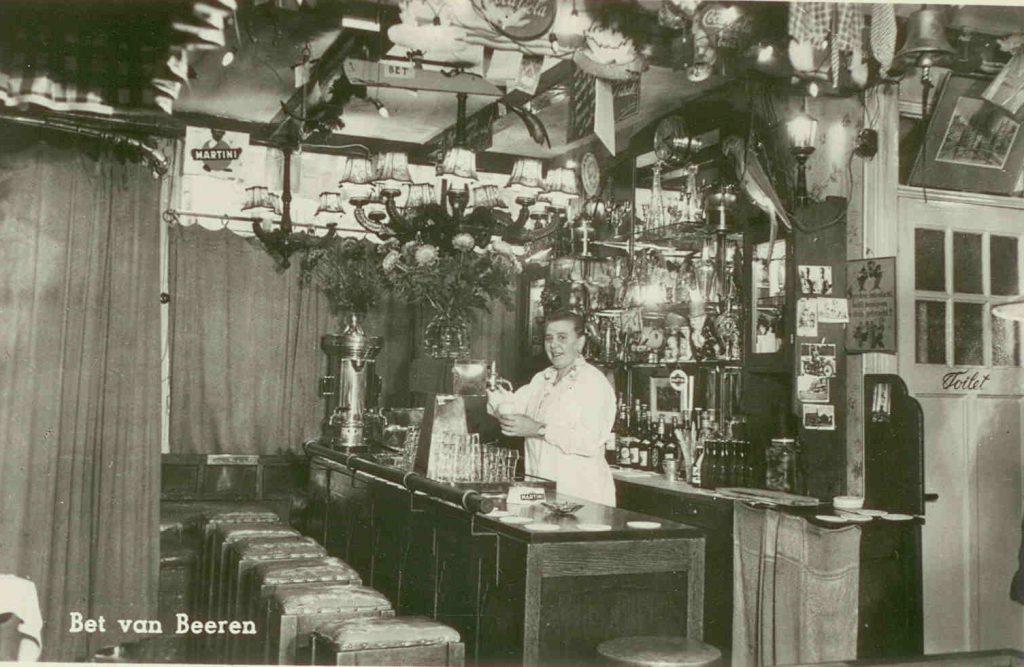
First gay bar in Amsterdam: Cafe 't Mandje at the Zeedijk, by Bret van Beeren.
before the lockdown
the movements
the bodies
the spatial setting
history
the wider context
qualitative and quantitative research
research question: to what extend can we keep the LGTBQ nightlife a safe space for LGTBQ people?
#2 intervention proposal
practice
Doing this research, I realised a few things: Nightlife is very important for LGTBQ people. It works as a safe space for many searching for community, recognition and acceptance.It is important LGTBQ nightlife remains accessible towards the whole community and doesn't disappear.
To make this in an intervention, I've combined a few things I found important:
First of all, I want to make people aware of the importance of safe spaces and in this case, LGTBQ nightlife, by celebrating the street.
Secondly, I want to bring in the intervention the things that make a safe space: trust, people, textile, vibration, movement.
At last, to respect the street and stay true to its habits and therefore looked at other factors uniting and defining the street (look at spatial setting).
These things combined, reminded me of the aids quilt which was made in 1985, as a memorial for the people that died of aids. I like the idea of working together on fabric to create a personal memorial that speaks to people suffering or have suffered from aids.
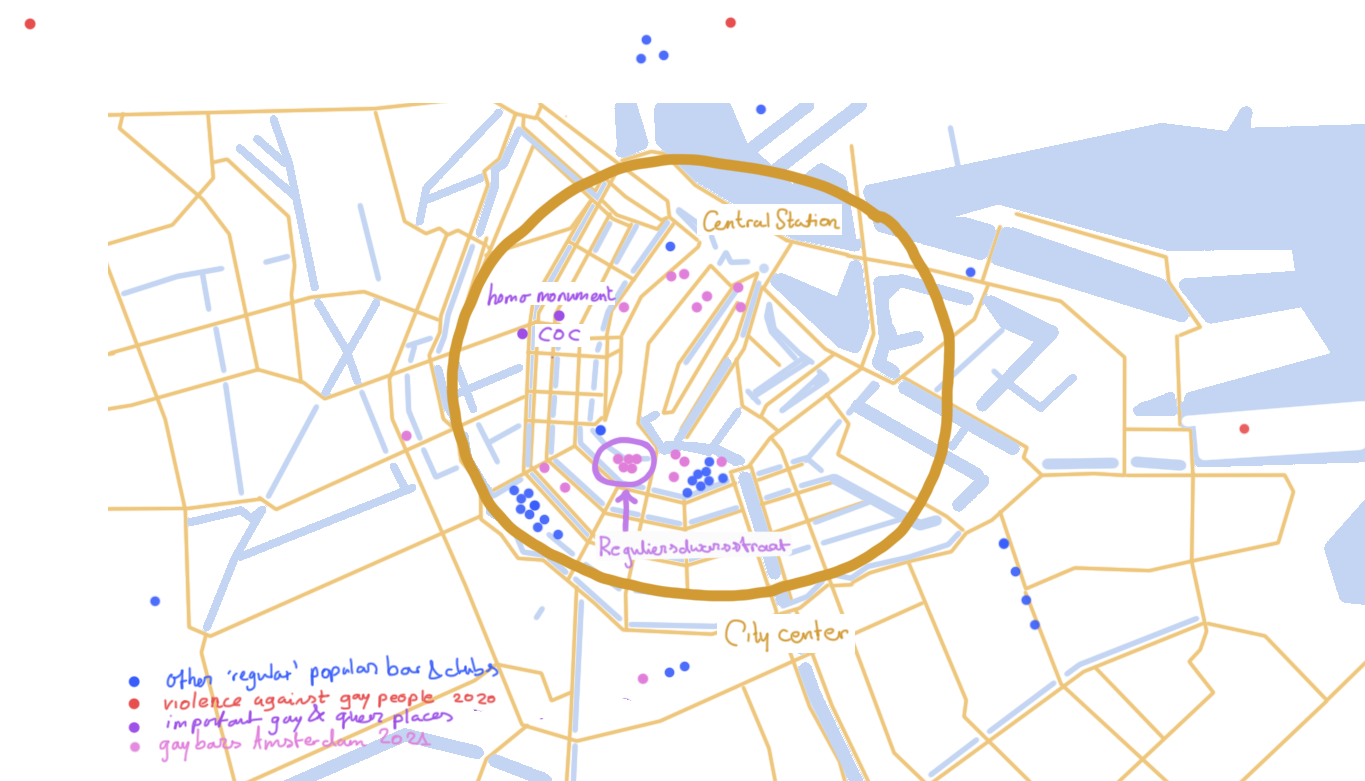
It made me wonder the importance of safe places, what safe means, and what a safe space is defined by. I asked friends to send me a picture of their safe-space. I didn't give them any other context. I got this:
Also people working at the Reguliersdwarsstraat find that the street needs to stay gay, shows an interview in 2016 from VICE.
After the closing of all the bars due the pandemic, owner of the Spijkerbar silently protested by putting out an IKEA sign in front of his bar. He did so to raise awareness of the fact places are shutting down and being replaced for nutella shops.
I categorised them by others - alone - music/books/things. Four responded with others, three with alone and three with music/books/things. This made me feel that a safe space is mostly somewhere with or distraction and trust. It sometimes includes textile (bedsheets), vibration and movement (music, purring, ocean).
I looked up the definition: ‘safe space’: noun a place or environment in which a person or category of people can feel confident that they will not be exposed to discrimination, criticism, harassment, or any other emotional or physical harm.
The food is moslty Italian and Asian:
what defines a safe space? what is the importance of safespaces? how do we keep safe spaces safe for everyone?
proposal question: what makes the LGTBQ nightlife a safe space? proposal intervention: creating a memorial for the safe space to bring awareness and recognition towards the LGTBQ community.
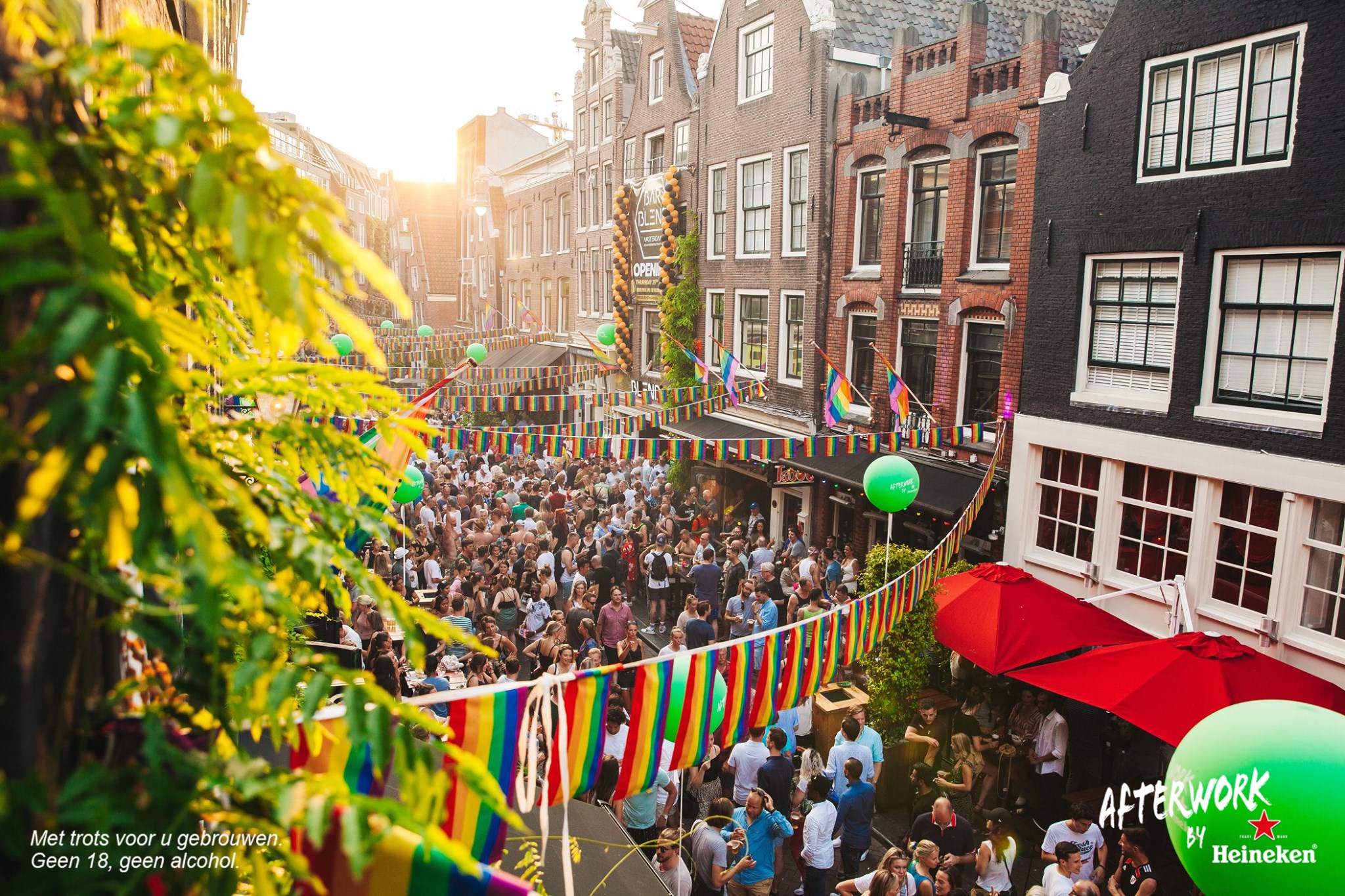
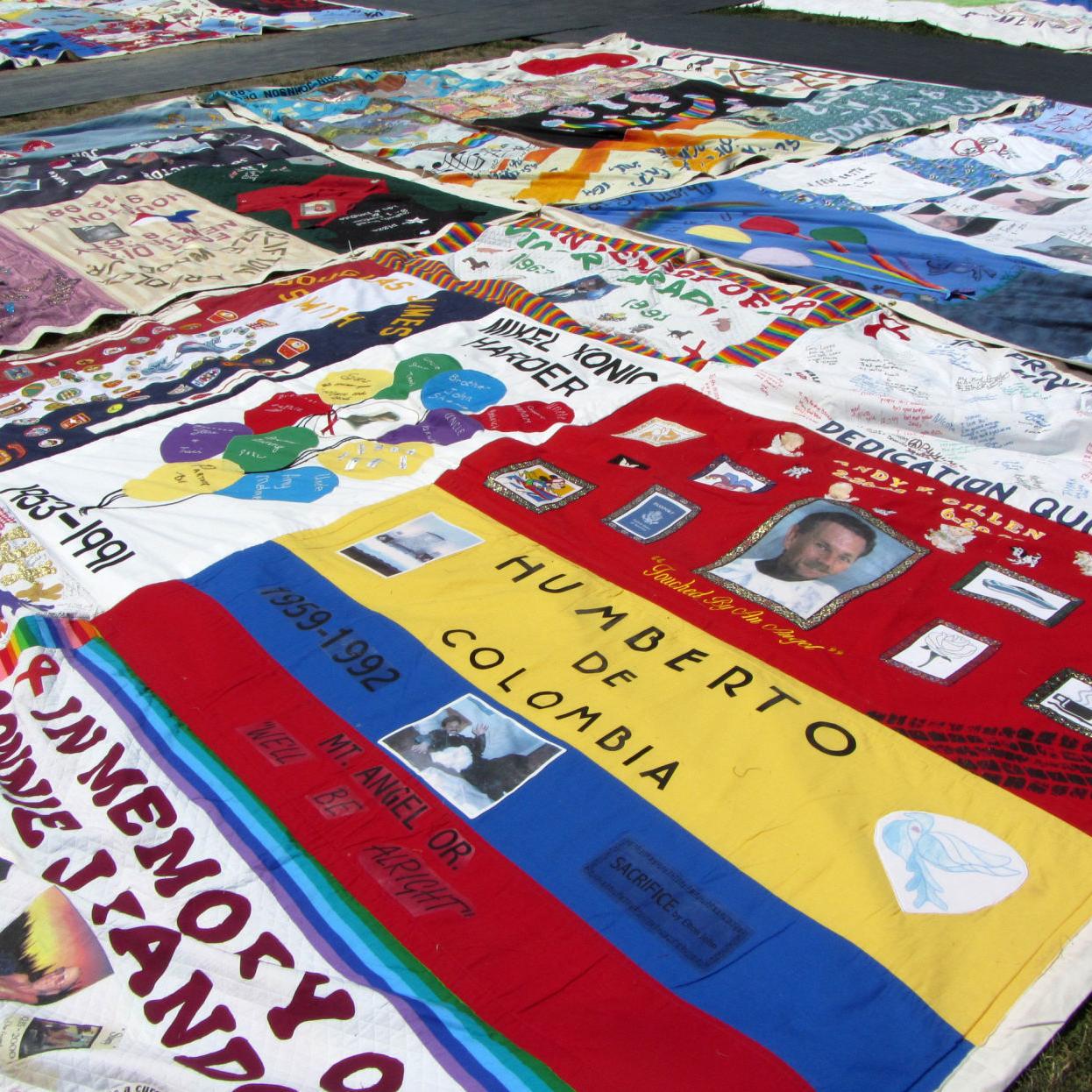
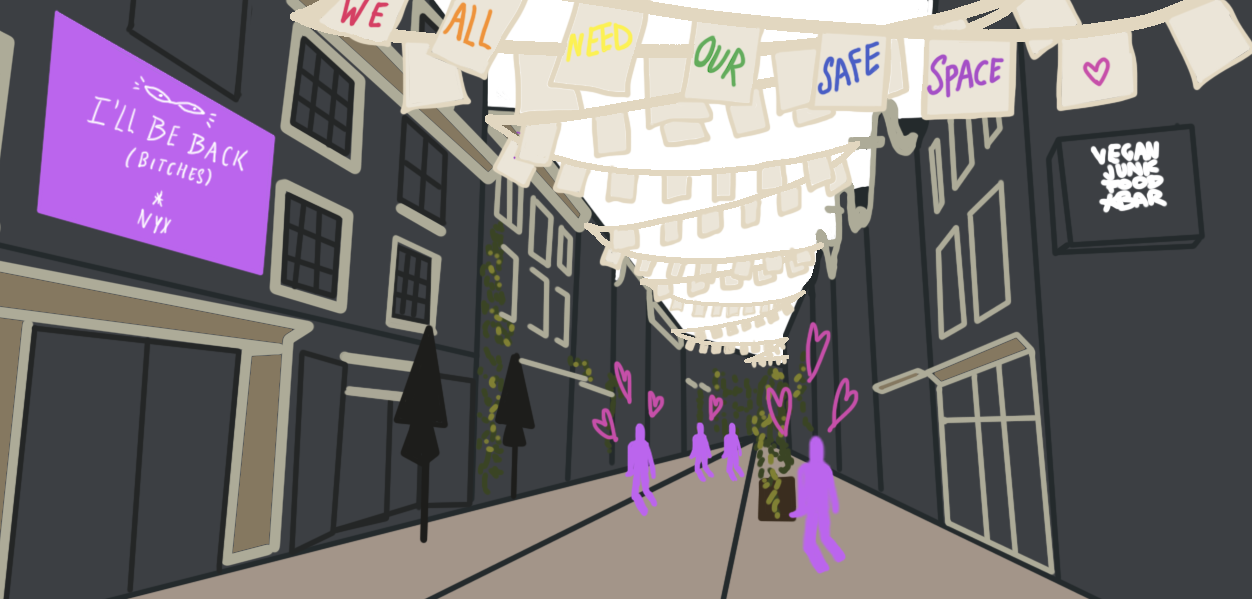
I think it is important for people to still have a place in which they find hope and recognition. I think celebrating the street by asking LGTBQ people to create a piece of clothe is a nice way to do so. It celebrates personal stories and brings awareness to the LGTBQ community and its need for safe spaces.
My hope with this project is that the city will come to see the importance of safe spaces, not only for the LGTBQ community, but for all.
I want to create this 'quilt flag' by asking LGTBQ people to share their idea of a safe space and why the street, LGTBQ nightlife and the community is important to them.
As many of us are sitting at home now, getting creative, we might as well do something creative together :) The flags will bring a personal story, that rased trust and creates movement and vibration in the empty party street.
To organise this I first need to find people who are willing to participate to this project. To do so I reach out to LGTBQ initiatives in the city, such as COC Amsterdam, Amsterdam Pink Panel and IHLIA, to help me promote this idea in towards LGTBQ people. Other than this I will create a personal mailing list, in which I sent this request to LGTBQ people in the city and promote this idea on social media.
Once I've had enough responces, I will send a letter towards the manager of the street; Maud Gussenhoven, in which I ask permission to continue this project. The letter will look something like this:
Dear Maud Gussenhoven,
I'm writing to you because it has come to my attention that the shutting down of the LGTBQ nightlife is taking away a lot of safe spaces. Safe spaces the community needs, especially during the pandemic.
To raise awareness and bring recognition towards the community I wanted to create 'quilt flags' made out of embroidered personal visualisations of people in the community.
I've promoted this idea towards many of the community. I've asked them to create an embroidered piece of fabric (30 x 40 cm) based on the question: How does the street creates a safe space?
Each flag will hang in the street, vorming an unity of flags merging over de street. I've added the quote: 'We all need our safe space" to some rows.
I've added a list of people who want to bring awareness to this topic and are willing to participate by creating a quilt. Some examples are provided as attachment.
We await your reply with interest,
Yours sincerely,
Alex Aldini
tryout quilts of me and my roommates